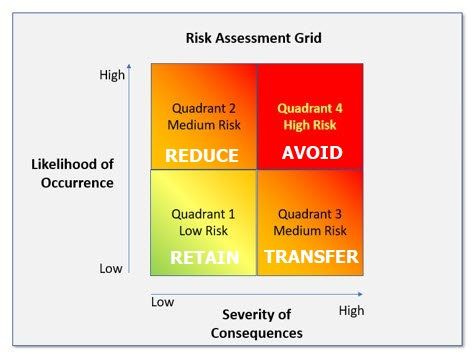The Most Underrated Risk Management System
The Risk & Opportunity Register: A dead-simple system to protect profit and reduce surprises.
👋 Hey, Kyle here! Welcome to The Influential Project Manager, a weekly newsletter covering the essentials of successful project leadership.
Today’s Overview:
Most construction projects don’t fail because of what teams did—they fail because of what teams didn’t see coming. Unflagged risks and missed opportunities are silent killers.
Without a weekly system to track threats and hunt for upside, you’re team is flying blind. Profit gets eaten up, timelines slip, and everyone’s reacting instead of leading.
As part of the Attorney archetype—the protector of the project—this guide breaks down a high-leverage tool: The Risk & Opportunity Register. It helps you anticipate threats, document issues, and defend your project’s time, money, and reputation before problems strike.
🏗️ Today’s issue is brought to you by Document Crunch!
Get our Tariff Assessment Tool for FREE and protect your projects!
Rapidly changing tariff policies are already impacting the construction industry. Now, more than ever, it’s important to understand your contracts to protect your business and navigate these challenges with confidence, while also knowing what you’re committing to before signing anything new. Having the right knowledge makes all the difference.
At Document Crunch, we believe in supporting the industry in good times, and especially, when things get tough. That’s why we’re making our Tariff Risk Assessment tool FREE for all industry stakeholders to easily identify contract risks. It’s our way of helping the construction community stay informed and prepared during this uncertain time—because we’re all in this together.
Ready to get access? Sign up to schedule your first tariff risk assessment with a member of our team.
🚨 The Risk & Opportunity Register
Filed under: Project Management, Lean Tools & Tactics
I love writing this newsletter.
There are plenty of reasons, but at the top of the list is that I get to take you on a journey with me. Not a physical journey—though an Influential Project Manager retreat would be fun—but a learning journey.
This isn’t some academic newsletter where I lecture on theory. It’s a space to share frameworks, tools, and battle-tested ideas from the field—in real time.
Today, I’m sharing one of the simplest and most effective tools I’ve ever used:
The Risk and Opportunity Register.
It’s simple. It’s practical. And it will protect your project’s bottom line.
Let’s dig in.
Why This System Matters
We all know the painful stats.
The vast majority of construction projects are delivered late – and, unfortunately – over-budget.
Solving this problem is one of the primary goals of the The Influential Project Manager.
I’ve seen projects spiral because of one unexpected risk that no one flagged in precon. I’ve also seen golden opportunities missed because the team was too busy fighting fires.
The worst part?
Everyone felt it coming.
No one named it.
And the team paid for it.
If you’re not actively reducing your exposure to risk and hunting for opportunity every single week, you’re leaving money on the table—or losing it outright.
That’s where the Risk & Opportunity Register comes in.
What is a Risk & Opportunity Register?
A Risk and Opportunity Register is a living document that tracks project threats and potential wins.
It’s built on two core beliefs:
Every project has risks.
Every project hides opportunities.
The register helps teams surface both early, often, and together.
Rather than reacting with financial capital when something breaks, you respond with intellectual capital to prevent the break (or capitalize on it).
It’s not a spreadsheet. It’s a mindset.
And when used weekly, it becomes one of the most valuable leadership tools on the project.
The Risk-Opportunity Framework
Ok, so how do you leverage a Risk & Opportunity Register in your project management process?
The generalized version involves six steps:
Identify Your Risks
Classify Them
Describe the Risk and Its Consequences
Quantify the Impact (Time & Cost)
Assign a SPUR (Single Person Ultimately Responsible)
Make a Plan of Attack
Let’s break down each step—starting with the most important one:
1. Identify Your Risks and Opportunities
This is the foundation.
Your register should track both threats and creative wins, side by side:
🟥 Risk Register: Flags threats before they become problems.
🟩 Opportunity Register: Captures creative ways to save time, money, or add value.
To build a strong list, start by scanning common project stress points. Some typical sources include:
Escalation assumptions on long-term or multi-phase projects
Supply chain assumptions—what, when, and how materials are acquired
Read also: How to Secure Your Projects Against Tariffs
Gaps between the basis of estimate and the budget
Conflicts between design intent and conditions of satisfaction
Labor productivity concerns
Errors in representation (design docs, shop drawings, specs, cut sheets)
Errors in realization (fabrication, install, commissioning)
Regulatory misunderstandings or compliance risks
These categories often generate early warning signals. Capture them.
Each item in your register should include:
Description – What’s the issue or opportunity?
Conditions of Satisfaction – What’s the team ultimately trying to achieve?
Probability – What’s the chance it happens? (in %)
Cost/Time Impact – What’s the projected consequence in dollars or days?
Champion – Who owns driving the solution?
Sunset Date – When will this be reviewed or resolved?
This step forces clarity. It gets everyone’s eyes on what matters. And it transforms vague concerns into actionable next steps.
2. Classify Your Risks
Not all risks are equal. Once you’ve identified a risk or opportunity, classify it.
Use a simple risk-priority matrix to rank each risk by likelihood and impact.
You’ll end up with four types:
Avoid (High Risk): Eliminate high-probability, high-impact risks through planning or redesign (if possible).
Transfer (Medium Risk): Push the risk to someone else via subcontracting, insurance, or vendor guarantees.
Mitigate (Medium Risk): Reduce the risk’s likelihood or impact through controls, checks, or better coordination.
Absorb (Low Risk): For low-probability, low-severity risks, sometimes it's best to simply accept them as a cost of doing business.
Your energy should go where the pain is biggest: high probability, high impact.
3. Describe the Risk and Its Consequences
Don’t be vague. Vague entries don’t get solved—they get ignored.
Be painfully clear:
Don’t just say “Material delay.”
Say: “20-day delay waiting for long-lead HVAC units will delay rough-in and cause MEP trade go-backs in Area B & C.”
Spell out the ripple effects. How will it impact labor? Other trades? Milestones? Profit?
Clarity builds urgency—and urgency drives action.
4. Quantify the Impact
Now assign numbers to it:
How many days could this delay your project?
How much money could it cost?
Don’t guess. Estimate. The numbers don’t have to be perfect—they just have to be real enough to motivate action.
5. Assign a SPUR (Single Person Ultimately Responsible)
Every item needs one clear owner—someone who wakes up thinking about solving it.
That’s your SPUR.
Their job is to report progress at the weekly team tactical:
What’s the current status?
What’s the next action?
Are we gaining ground or falling behind?
No confusion. No finger-pointing. Just ownership and accountability.
6. Make a Plan of Attack
Now it’s time to lead.
You’ve identified the risks. You’ve ranked them. Now build the playbook for what to do before they hit.
Use what the Navy SEALs call “Precision Planning.” This is where they study the mission and map a response to every “what if” while in calm conditions, so when pressure shows up, they just execute. You should do the same.
How to do it:
List every known risk, unknown, and constraint
Walk through each with your team
Ask: “If this happens, what’s our move?”
Make decisions now—when everyone is calm, sharp, and clear-headed
You’re not reacting. You’re preparing.
Your goal is simple: No surprises.
7. Revisit Weekly
This is the step most teams skip—and it’s why most systems fail.
You must review the register weekly. Make it part of your rhythm.
Every week, ask:
What’s new?
What’s resolved?
What’s changed?
Small project? Keep it in your standard meeting agenda.
Large project? Give it its own 30-minute slot.
The best teams I’ve worked with live and breathe this tool. It becomes the heartbeat of the project.
Because they know: Money doesn’t protect itself. You have to protect it.
🔚 Final Thoughts
The best project managers don’t just build schedules—they build systems.
So if you want a practical, high-leverage way to lead with clarity, reduce surprises, and increase your margin…
Start using a Risk & Opportunity Register.
It’s not flashy.
It’s not complicated.
But it works.
And it’s how you win the war on waste, risk, and variation—one week at a time.
Until next week,
Kyle Nitchen
DOCUMENT CRUNCH
Automatically draft notices Document Crunch.
This is the hallmark of antifragile project management: using every disruption as a catalyst for innovation and improvement.
Project managers typically know what needs to get communicated to owners, like rain delays, late supply deliveries, jobsite vandalization, etc. However, it’s not enough to communicate what’s happening. Contracts dictate that you must give notice in a specific timeline, format, delivery method, and sometimes to multiple people to be legally compliant. Project managers may think they’re providing notice but often fail to give proper notice that will protect them legally if schedules, costs, or resources are impacted.
With Document Crunch’s Notice Builder for Procore, it’s just three steps to draft a notice within a project:
Select the event type then describe what’s going on and the relevant date.
Select what’s been impacted: scope, schedule, and/or cost, etc.
Explain what actions have already been taken to mitigate the situation and what actions are planned.
Then, let AI do its thing. Copy your notice onto your company letterhead or email, adjust as needed, and send!
Want to see it in action? Click for a free demo.

Whenever you're ready, there are 5 ways I can help you:
Get my first book! No Bullsh*t Project: A Project Manager’s Guide to Successful Project Leadership
Upgrade your scheduling software. Experience the future planning system for construction and real estate development. iPM subscribers get a 15% discount on the first year license.
Get my full toolbox (free). Access 30+ software and hardware tools I'm using today.
Learn Takt Planning. Elevate your skills as a scheduler, planner, and lean builder with the Takt Planning & Control online course. Use code "Influentialpmtakt" for 30% off.
Advertise in my newsletter. Put your brand in front of 7,000+ construction project managers, leaders, and execs. (Booked out 8 weeks)









Thanks for the valuable insights and recommendations
Yes! Revisiting weekly to understand how the situation has changed is really important.
Iterating on your plan and updating it based on available information is so important.